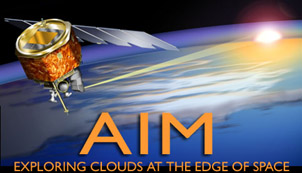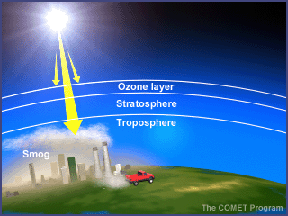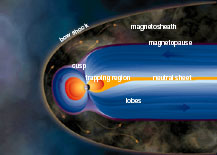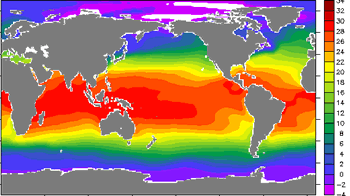Click on image for full size
Courtesy of NASA (Hampton University)
Space Missions to study Earth's Atmosphere & Climate
Satellites that orbit Earth help us study Earth's atmosphere, weather, and climate. Here are a few of the many spacecraft that study our atmosphere.
Aura was launched in July 2004. It is studying pollution, gases that may be related to climate change, and ozone. IMAGE (Imager for Magnetopause-to-Aurora Global Exploration) has been in space studying Earth's plasmasphere since March 2000. Polar, which was launched in 1996, observes aurora and the polar magnetosphere. UARS (Upper Atmosphere Research Satellite) was launched from the space shuttle in 1991. UARS studies many aspects of the atmosphere, especially chemistry in the middle and upper stratosphere. UARS is old, and only half of its instruments are still working; but it has gathered lots of valuable data over the years.
More satellites will be launched in the future to study the atmosphere. COSMIC (Constellation Observing System for Meteorology, Ionosphere & Climate) is a group of satellites that will be launched in the spring of 2005. COSMIC will gather data about temperature and humidity in many places around the world and at many different heights in the atmosphere. AIM (Aeronomy of Ice in the Mesosphere) will be launched in September 2006. AIM will study changes in the mesosphere by looking at noctilucent clouds.
Some older missions that studied the atmosphere have ended. SNOE (Student Nitric Oxide Explorer) studied nitric oxide in the lower thermosphere from 1998 to 2003. A series of seven Nimbus satellites, flown from 1964 through 1994, pioneered many of the instruments and techniques used in atmospheric observation. Another series of satellites, called GOES (Geostationary Operational Environmental Satellite), has helped us forecast the weather since GOES-1 was launched in 1975. Two of the spacecraft, GOES-8 and GOES-10, are still in use.














